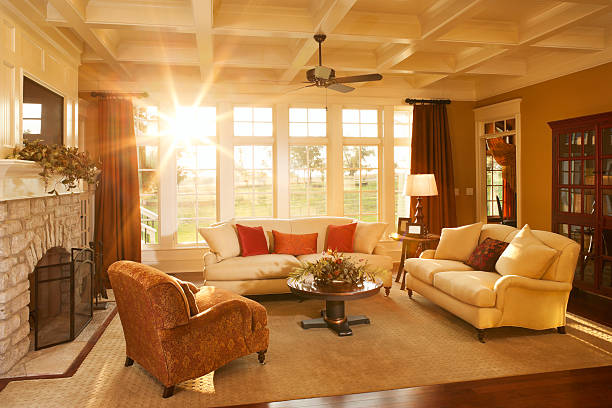Revamping Interior Styling with Textural Diversity: A Fresh Approach
Introduction: In the ever-evolving world of interior design, we often find ourselves entranced by color palettes and unique pieces of furniture. However, the impact of texture on our living spaces is frequently overlooked. This article delves into the world of textural diversity in interior styling, offering a fresh perspective on how the tactile element can completely transform a room.

A Historical Glimpse at Textural Diversity
Texture has been a key element in design since ancient times. From the rough-hewn stone of prehistoric dwellings to the luxurious silks of the Byzantine Empire, the touch and feel of materials have always influenced our perception of spaces. As we moved into the industrial age, the rise of mass-produced items often saw texture taking a backseat. However, in recent years, there’s been a resurgence of interest, with designers recognizing the power of textural diversity to create depth and visual interest.
Current Trends: Touching Base with Textures
In contemporary interior styling, texture has taken center stage. Designers are now experimenting with a mix of textures, from rough and rugged to smooth and glossy, to create a visually intriguing space. Some popular trends include the use of natural materials like stone, wood, and jute, juxtaposed with polished metals, soft velvet, and smooth ceramics. This blend of contrasting textures creates a balance that is both visually engaging and comforting.
Texture: Practicality and Market Trends
Texture plays a practical role in interior design. Certain materials, like leather or wool, offer warmth and durability, while others, like silk or glass, provide a sleek, elegant touch. In recent market trends, there’s been a growing interest in artisanal, handcrafted items that showcase the beauty of natural textures. This trend suggests an increasing appreciation of the tactile element in home decor, and how it enhances our daily living experience.
The Tactile Transformations: Why Textural Diversity Matters
Research has shown that texture can affect our mood and perception of a space. A room filled with smooth, glossy surfaces can feel cold and impersonal, while one with an abundance of soft, plush materials can feel cozy and welcoming. By incorporating a variety of textures, we can create a space that is visually interesting and emotionally appealing.
Embracing Textural Diversity: Styling Tips
To incorporate textural diversity into your home, start with the basics. Consider the large surfaces first, like walls, floors, and furniture. Mix and match materials to create a balanced look. For instance, pair a sleek leather couch with a soft, fluffy rug. Add smaller textural details with accessories like cushions, throws, and artwork. Remember, the goal is to create a sense of depth and variety without overwhelming the space.
Textural diversity offers a fresh approach to interior styling, bringing rooms to life with depth, visual interest, and a tangible sense of comfort. By embracing the tactile element, we can create living spaces that are not just visually appealing, but also inherently comforting and engaging. As we continue to explore this trend, we can look forward to a future of interior design that is rich in sensory experiences.




